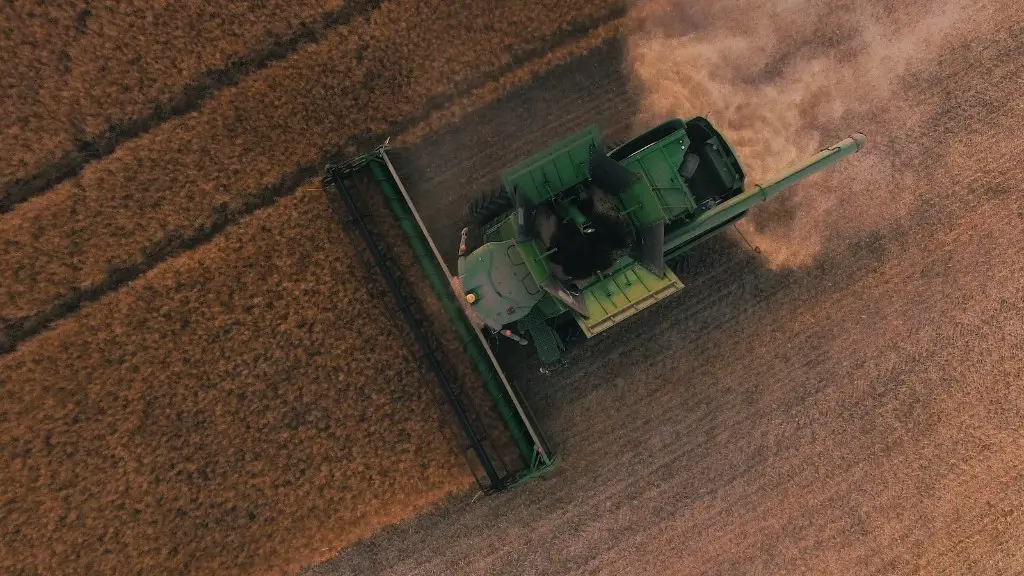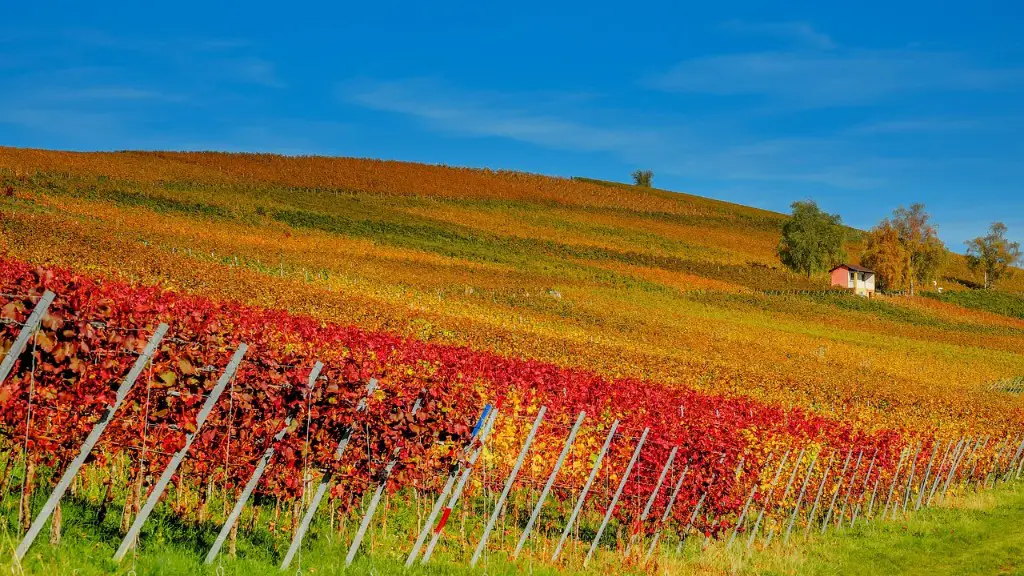Agriculture and the Industrial Revolution
Agriculture was central to the Industrial Revolution, with changes happening both before and during the period. In the centuries preceding the Industrial Revolution, enclosure acts, crop rotation and further advances meant that production was slowly becoming more efficient. However, it was during the Industrial Revolution that massive strides were taken and agricultural advances revolutionized the way that food was grown.
The Industrial Revolution witnessed new farm technologies, machines and techniques being developed which lead to increased production. Animal and crop yields improved due to mechanization, such as the invention of horse-drawn hoes and mechanized farm equipment, allowing more food to be grown in a shorter period of time. This had a direct knock-on effect on the population, who became better-fed and healthy as a result.
It was during the Industrial Revolution that fertilizers began to be used, and nitrate-based fertilizers meant crop yields were far greater than previously thought possible. Drainage was improved using steam-powered drainage equipment and irrigation was also improved. The steam engine was also used in threshing, allowing farmers to mechanize the process of separating grain from straw. This made the process far more efficient and less labor intensive.
The use of animals to power farm machines was also made possible by strides made during the Industrial Revolution, as machines replaced the manpower needed to work the land. Animal labor was affordable, and provided with a constant source of power to increase yields and reduce the labor required, animal strength was soon replaced with that of the steam engine.
Telecommunication was also improved during the Industrial Revolution which enabled information to be exchanged quickly and easily between farms, contributing to the success of agriculture. Along with improved transportation and storage, food could now be transported more easily and further distances.
Agricultural productivity saw a massive transformation during the Industrial Revolution due to improved farm technologies, machines and techniques. Farmers saw greater profits from increased yields, and consumers benefited from the improved quality and quantity of the food.
Improved Genetics and Breeding
Genetics and breeding was also improved during the Industrial Revolution. Prior to this period, livestock was bred for specific purposes, but during the Industrial Revolution, new breeds of livestock were developed which enhanced meat production, yield, and egg laying. Improved selection of herds allowed farmers to choose animals which most effectively suit their need, and also increase the disease resistance of their herds.
Techniques such as artificial insemination and cloning were also developed in the late 1800s, allowing farmers to replicate their best livestock more quickly. This increased the genetic diversity of plant and animal species and allowed farmers to attract buyers by advertising the superior characteristics of their livestock.
The introduction of new livestock feeds during the industrial revolution saw animal nutrition improve, providing them with the nutrients required for healthier growth, particularly in terms of milk production. The quality and quantity of milk provided to consumers also grew, as dairy farmers could produce larger quantities of milk with greater nutritional quality.
Chemical insecticides and herbicides were also developed during the Industrial Revolution, helping farmers manage crop pests and weeds, protecting their crops and increasing their yields. Improved crop rotation, as well as the introduction of crop rotation and multiple cropping, increased the productivity of the land.
The combination of improved genetics and breeding, nutrition, chemical insecticides and herbicides, as well as improved crop rotation and multiple cropping, led to a transformation in the quality and quantity of the food being produced.
Impacts of the Industrial Revolution on Agriculture
The advances in technology and science during the Industrial Revolution had a profound effect on the way food production occurred. For starters, the mechanization of farming greatly increased efficiency and output. This meant farms could produce much more food with fewer resources and labor, achieved by using machines instead of manpower. This increased the overall productivity of the land and reduced the cost of production.
The introduction of fertilizers, improved animal and crop nutrition, and the development of crop rotation and multiple cropping led to increased yields and improved the quality of food production. Fertilizers prevented nutrient depletion of the soil and improved crop growth, while improved nutrition and rotation of the crops helped to avoid crop diseases and improved soil fertility. This combination of advances saw a noticeable rise in food production, providing both farmers and consumers with greater benefits.
The introduction of modern canning techniques and advances in storage and transportation meant food could now be stored and transported more efficiently, and in greater quantities. The development of railways and shipping during the Industrial Revolution made the transportation of food easier and faster, allowing more remote areas to access food which was not available previously. This had a direct beneficial impact on the population, as more people had access to better-quality food.
The advances made in agriculture during the Industrial Revolution ultimately revolutionized food production. All the improvements mean farmers could produce more food while expending fewer resources and labor. This had a direct impact on the population, as more people had access to better-quality food and the nutrition associated with it.
Farm Mechanization
Farm mechanization was one of the most crucial area of advancement during the Industrial Revolution. The introduction of mechanized equipment such as the horse-drawn hoe, reaper and thresher meant that more food could be produced in a shorter period of time, with fewer resources and labor. This made farming more efficient and led to increased yields.
The steam engine was particularly influential in aiding the mechanization of farming. It was used for pumps, irrigation, threshing and seed drills, reducing manual labor and increasing the speed and efficiency at which farms could work. Mechanization allowed farmers to do more with less, leading to increased crop yields, higher-quality food, and increased profits.
The mechanization of farming also changed the nature of farm labor. As fewer people were needed to work the land, many farm laborers migrated to cities to find work in factories and manufacturing. This labor migration had far-reaching consequences, as it changed the entire nature of the labor market and ultimately led to cities growing in size and population.
The Industrial Revolution saw the introduction of a number of mechanized farming tools which had a profound effect on the way food was produced, stored and transported. Farms became more efficient, leading to increased yields, better-quality food for consumers, and improved profits for farmers.
Improved Farm Technologies
Alongside mechanisms, improved farm technologies and techniques were introduced during the Industrial Revolution. This included chemical fertilizers, improved crop rotation and multiple cropping, improved drainage and irrigation, as well as improved genetics and breeding. All these factors improved the productivity of farms and increased the yield of their produce.
The introduction of chemical fertilizers was particularly significant, as they replaced the laborious task of crop rotation and allowed farmers to get higher yields in a shorter time. Nitrate-based fertilizers also allowed crops to grow with greater nutrients, leading to healthier and higher-quality produce.
Farmers also became more efficient and productive by improving the selection of their herds. Improved genetics and breeding meant farmers could choose animals which were most suited to their needs, allowing them to produce higher yields and more disease-resistant livestock. Artificial insemination and cloning of animals was also introduced, which allowed farmers to rapidly improve the quality of their livestock in a short amount of time.
The introduction of new livestock feeds during the Industrial Revolution also saw animal nutrition improve, which contributed to healthier growth and milk production. This improved the quality and quantity of milk being produced, helping to feed a larger population as a result.
The development of chemical insecticides and herbicides allowed farmers to better manage pests, weeds and other threats, improving the quality and quantity of their crops. Improved crop rotation and multiple cropping also increased agricultural productivity, while improved drainage and irrigation allowed more land to be cultivated.
Utilizing improved farm technologies, farmers were now able to produce far more food using fewer resources, reducing their labor costs, and increasing profits. This revolutionized the food production industry, contributing to the success of the Industrial Revolution.





